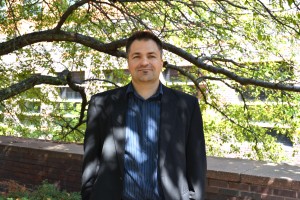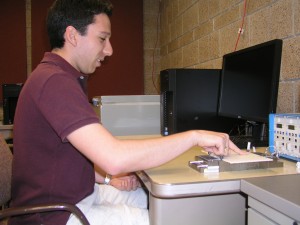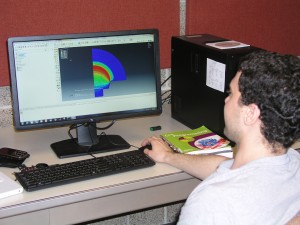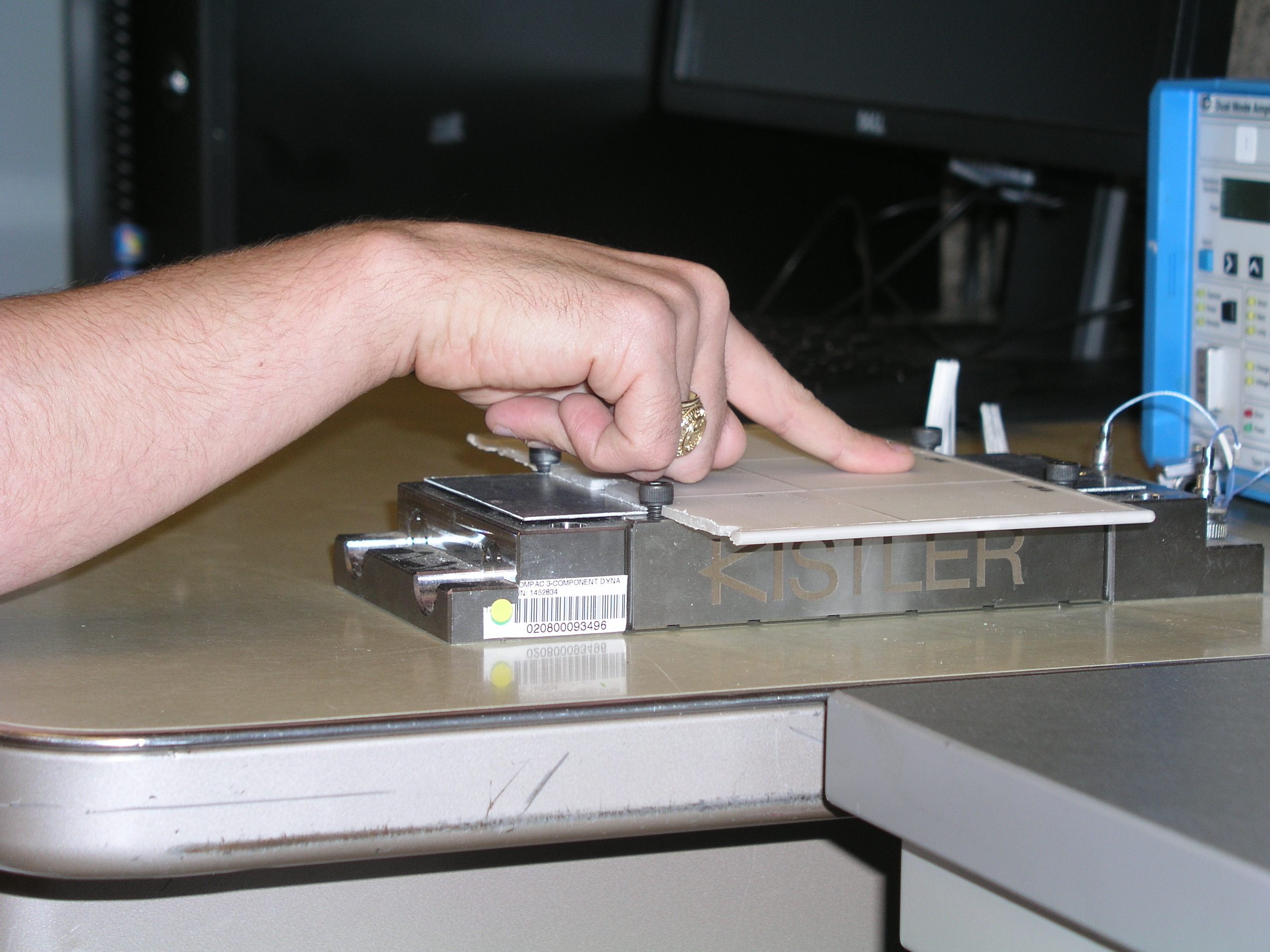Open an engineering textbook, and you’re sure to find charts, graphs, and complex equations. Hard enough to decipher, imagine parsing that information if you were blind or visually impaired.

Conveying the detailed visual information that goes hand-in-hand with disciplines in the science, technology, engineering, and mathematics (STEM) fields isn’t necessarily impossible. But, according to Cris Schwartz, associate professor of mechanical engineering, it’s not something that happens as often as it should.
“Many students with visual impairments are extremely talented. There is no reason they shouldn’t be able to go into STEM fields, but there just aren’t a lot of educational tools for them,” he explained. “Even at the professional level, if they got a degree in chemistry or engineering, how would they actually do their job in the real world?”
That’s why Schwartz is using his National Science Foundation CAREER Award to look for ways to make the fields more accessible to those with visual impairments.
“What becomes immediately apparent when working with these students is that the tools they have in terms of sketching out ideas, working in groups, or interpreting visual information are very crude—think World War II era in a world completely saturated in display technology,” Schwartz said.
In his proposal “Using haptically augmented tactile communication methods to foster the inclusion of the visually impaired in science, technology, engineering and mathematics (STEM) professions,” Schwartz plans to look at a theoretical maximum in terms of how much information can be packed into a given surface area when using tactile communication methods.

“We want to see if it’s possible to use existing braille and do things in addition to the raised dots, like change the friction, prickliness, temperature, etc.,” he explains. “Is there anything we can do to add more information in that same space so students can get more information from their textbooks even if they are coded in braille?”
From there, he wants to use any lessons learned to develop some new methods and techniques for illustrating information in ways that aren’t currently being used.
Schwartz is building on some of his previous work in biotribology, which looks at friction as it relates to objects that come into contact with the human body. While working in the field, he and fellow researchers started to realize the importance of tactility and touch, and that despite the psychological component involved, there are fundamental engineering questions to be answered—like what manufacturing processes are necessary to make a surface feel a certain way.
That’s when he started thinking about how surfaces are associated with different tactile characteristics. “You can get human evaluators to explain what they feel when they touch a surface, and then you can convert that information into mathematical, quantitative terms,” he said. “If we can start correlating the sensory information with measureable surface properties and textures, we can start designing surfaces that exhibit desired tactile attributes.”

In addition to his research, Schwartz has been working with the Texas School for Blind and Visually Impaired in Austin for a few years. He developed and taught a one-week summer course called ProblemBusters! to teach visually impaired and blind students about engineering design, thermodynamics, and mechanics in an immersive environment. Similarly, he has recently started a partnership with the Iowa Braille School in Vinton, working to incorporate realistic engineering experiences into activities for some of the state’s visually impaired students.
Both of those projects will continue as part of this CAREER award, as well as the possibility of developing a collaborative design website. The site would allow students at these schools to give ideas to engineering students to co-develop a product the visually impaired community needs.
Schwartz says solving these sorts of problems is what makes this an important engineering project, even though it has so many other interdisciplinary components.
“What motivates me is that once we import what we already know about how the world works and how to display information into some sort of tactile-based system, we may really start seeing the untapped potential of students with visual impairment,” he said. “My hope is that when these students enter the STEM fields, they will start being the innovators, giving personal insight into how to make these display technologies and approaches even better, so essentially the problem will be solved in the long term.”
